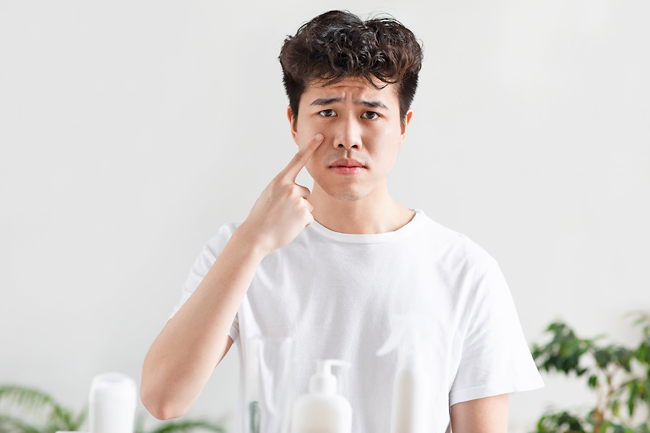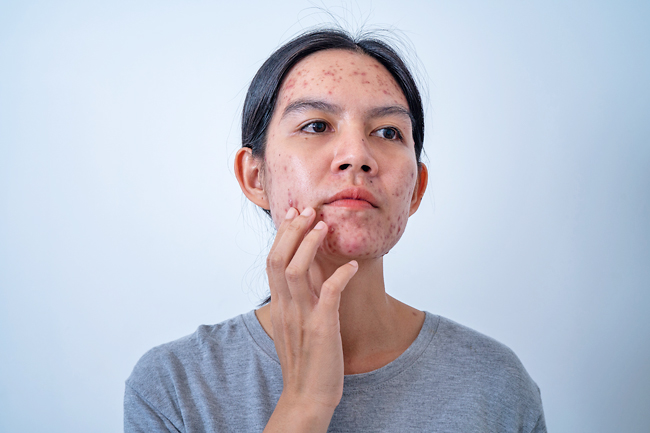ANN/THE STAR – Most people go through an “acne era” during their teenage days.
Some of us have mild cases, while others experience severe acne.
Active acne can create a lot of inflammation, leading to skin tissue loss and acne scar formation.
Our “itchy hands” also often tend to unconsciously scratch or manipulate the acne, which can worsen the situation.
Here are four of the most common types of acne scars:
ICE PICK SCARS
These scars get their name from their “ice pick” shape.
They are V-shaped, very narrow and deep depressions that point downward into the skin.
The sharp edges extend into the deep dermis (deeper layer of the skin) and subcutaneous tissue.
Generally, the size is less than one to two millimetres.
They are caused by severe inflammation, which damages the skin deeply, and inadequate collagen production.
Ice pick scars are best treated with trichloroacetic acid (TCA) Chemical Reconstruction of Skin Scars (CROSS).
This is a type of chemical peel that helps form extra collagen and raise the scar.
The TCA is placed directly onto the scar with a toothpick.
It denatures the collagen of the scar tissues and promotes scar remodelling by stimulating formation of new collagen.


This treatment is generally well-tolerated with minimal downtime and pain.
Other treatments are with lasers and radiofrequency (RF) microneedling.
Fractional carbon dioxide laser is an ablative laser that is very effective in acne scar management.
It is one of the oldest acne treatments, but still relevant in today’s world.
Carbon dioxide lasers create microscopic holes in the skin and stimulate collagen production, which helps break up scar tissue.
This treatment generally requires multiple sessions, with intervals of four to six weeks between sessions.
After each session, there will be mild redness, swelling and skin peeling over the next three to five days.
RF microneedling is another powerful treatment for scar improvement.
Microneedling creates micro- punctures in the skin, which breaks down old scar tissue.
It is combined with RF to stimulate the skin, which aids collagen and elastin production.
The RF energy is distributed deep into the dermis layer of the skin.
Post-procedure, the skin can appear red with mild swelling for the next three to five days.
ROLLING SCARS
These scars are shallow depressions on the skin with smooth, sloping edges.
They are caused by long-term inflammatory acne that leads to the formation of bands of scar tissue underneath the skin.
The bands pull at the top layer of the skin (epidermis) – a process also known as dermal tethering – leading to a rolling or wave-like appearance.
Rolling scars are larger than ice pick scars, but smaller than boxcar scars.
They can be treated with a procedure called subcision. This involves breaking up the scar tissue to raise the scar closer to the level of the surrounding tissue.
Subcision breaks the fibrous bands under the skin mechanically and this improves the appearance of the scar.
This treatment generally causes no discomfort, with minimal downtime.
Rolling scars can also be treated with lasers and RF microneedling.
BOXCAR SCARS
These scars are broad, oval, box-like depression scars with sharply defined edges.
They are caused by inflammatory acne that destroys collagen in the skin, creating a depressed scar. Boxcar scars tend to form in thicker skin areas such as the lower cheeks or jawline.
They are generally larger than ice pick scars and rolling scars, with sizes ranging from two to four mm.
Boxcar scars can also be treated with subcision, lasers and RF microneedling.
KELOID SCARS
These are caused by excessive growth of scar tissue in response to acne inflammation.
Keloids are raised, lumpy and shiny lesions.
They can be pink, red, skin- coloured or darker, compared to the surrounding skin.
They are commonly found on bony areas such as the chest, back, shoulders and jawline, as well as in individuals with darker skin.
Keloid acne scars form when overproduction of collagen occurs.
They can continue to develop and grow months or years after the initial acne lesion.
Keloids are mainly treated with intralesional steroid injections.
The injections can reduce the size of the keloid by breaking down collagen fibres within the scar tissue.
Surgical removal of keloids can also be done, but the risk of the scar recurring is high.
The concept behind acne scar treatment has remained the same over the years.
However, every year sees newer modalities and machines being introduced that are safer and more effective.





